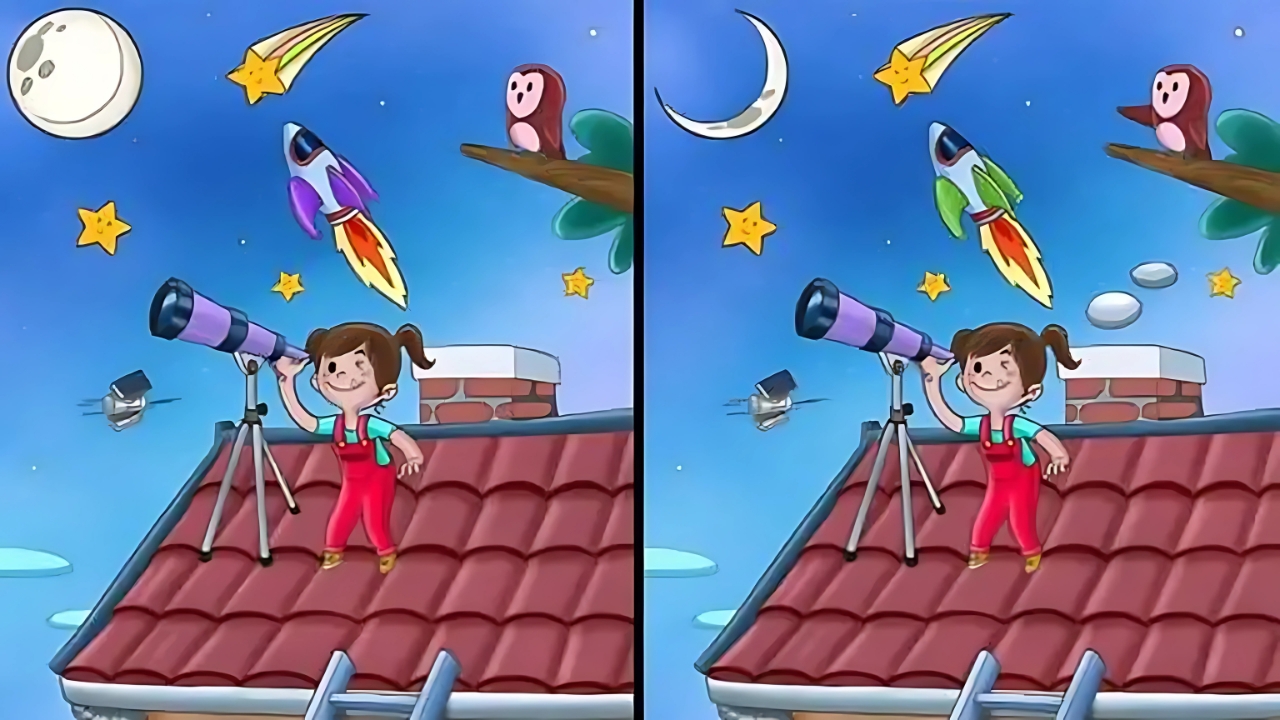Visual puzzles, such as spot-the-difference challenges, have long been a favorite pastime for people of all ages. These engaging activities not only provide entertainment but also serve as excellent exercises for sharpening cognitive skills, improving focus, and enhancing visual perception.
One popular challenge involves identifying subtle differences between two nearly identical images within a tight time limit, such as 12 seconds. In this article, we’ll explore the appeal of spot-the-difference puzzles, their benefits for mental agility, and tips for mastering the art of spotting discrepancies quickly. Whether you’re a puzzle enthusiast or a casual participant, this guide will help you improve your skills and enjoy the thrill of the challenge.
The Appeal of Spot-the-Difference Puzzles

Spot-the-difference puzzles captivate people because they combine fun with mental stimulation. At first glance, the two images appear identical, but closer inspection reveals small, cleverly hidden discrepancies. These puzzles test your ability to notice minute details, making them both challenging and rewarding. The time constraint—such as finding five differences in just 12 seconds—adds an element of urgency, turning a simple observation task into an exciting race against the clock.
These puzzles are accessible to everyone, requiring no special tools or prior knowledge. All you need is a keen eye and a focused mind. They can be enjoyed alone, with friends, or as a family activity, making them versatile for various settings. Additionally, the satisfaction of spotting a difference, especially under time pressure, provides a sense of accomplishment that keeps people coming back for more.
Cognitive Benefits of Visual Puzzles
Engaging in spot-the-difference puzzles offers numerous cognitive benefits. These activities stimulate various parts of the brain, enhancing mental sharpness and overall cognitive function. Here are some key advantages:
1. Improved Visual Perception
Spot-the-difference puzzles train your brain to process visual information more effectively. By scanning images for subtle variations, you strengthen your ability to notice details that might otherwise go overlooked. This skill is valuable in everyday life, from identifying changes in your environment to performing tasks that require precision.
2. Enhanced Focus and Concentration
The time-sensitive nature of these puzzles forces you to concentrate intensely. In just 12 seconds, you must block out distractions and zero in on the task at hand. Over time, regular practice can improve your ability to focus on complex tasks, making it easier to stay attentive in other areas of life.
3. Boosted Memory Skills
To spot differences, you often need to compare one image to the other, holding details in your short-term memory. This process strengthens your working memory, which is essential for problem-solving and decision-making. Regular engagement with visual puzzles can enhance your ability to retain and recall information quickly.
4. Faster Cognitive Processing
The pressure of a time limit encourages your brain to process information more quickly. As you practice, you’ll develop the ability to scan images efficiently, identifying differences with greater speed and accuracy. This improved processing speed can translate to other tasks that require quick thinking.
5. Stress Relief and Mental Relaxation
While the time constraint adds excitement, solving puzzles can also be a relaxing activity. Focusing on a single task can provide a mental break from daily stresses, allowing you to immerse yourself in a fun and engaging challenge. The sense of achievement from finding all the differences can boost your mood and confidence.
Strategies for Spotting Differences Quickly
Mastering a spot-the-difference challenge within a tight time frame, such as 12 seconds, requires strategy and practice. Here are some effective tips to help you improve your performance:
1. Divide and Conquer
Instead of scanning the entire image randomly, divide it into smaller sections. Focus on one area at a time, such as the top left quadrant, before moving to another. This systematic approach ensures you cover the entire image without missing key details.
2. Look for Obvious Clues First
Some differences are more noticeable than others, such as changes in color, size, or shape. Start by scanning for these obvious discrepancies to quickly check them off your list. This can save time for spotting subtler differences later.
3. Compare Symmetrical Elements
Many spot-the-difference images are designed with symmetry in mind. Pay close attention to symmetrical elements, such as patterns, objects, or backgrounds, as differences are often hidden in these areas. For example, a missing button on one side of a shirt or a shifted line in a pattern can be a key clue.
4. Use Peripheral Vision
While focusing on specific areas, use your peripheral vision to scan for anomalies. Sometimes, differences stand out when you’re not looking directly at them. This technique can help you spot irregularities without wasting precious seconds.
5. Practice Under Time Pressure
To improve your speed, practice with a timer. Start with a longer time limit, such as 20 seconds, and gradually reduce it as you get better. This will train your brain to process visual information more quickly and efficiently.
6. Stay Calm and Focused
The 12-second time limit can feel intense, but panicking will only hinder your performance. Take a deep breath, clear your mind, and focus on the task. Staying calm allows you to think clearly and spot differences more effectively.
Why the 12-Second Challenge?
The 12-second time limit is what makes this particular spot-the-difference challenge so thrilling. It pushes your cognitive abilities to the limit, requiring you to balance speed with accuracy. This short time frame mimics real-world scenarios where quick decision-making and keen observation are essential, such as in professions like design, quality control, or even law enforcement.
Additionally, the 12-second constraint makes the puzzle accessible for quick sessions. Whether you’re on a coffee break, waiting for an appointment, or looking for a brief mental workout, this challenge fits perfectly into a busy schedule. The combination of a short duration and a clear goal—finding five differences—creates a sense of urgency and excitement that keeps participants engaged.
How to Incorporate Spot-the-Difference Puzzles into Your Routine
If you enjoy the thrill of spot-the-difference challenges, consider making them a regular part of your routine. Here are some ways to incorporate these puzzles into your daily life:
- Morning Brain Warm-Up: Start your day with a quick puzzle to wake up your brain and prepare for the day ahead.
- Break-Time Activity: Use spot-the-difference puzzles as a fun way to unwind during a work or study break.
- Family Fun: Challenge friends or family members to see who can spot the differences the fastest, turning it into a friendly competition.
- Skill-Building Exercise: Dedicate a few minutes each day to practicing visual puzzles to improve your cognitive skills over time.
Where to Find Spot-the-Difference Puzzles
Spot-the-difference puzzles are widely available in various formats. You can find them in puzzle books, magazines, or online platforms. Many websites and mobile apps offer free puzzles with varying levels of difficulty, allowing you to practice at your own pace. Some platforms even let you create your own puzzles, adding a personalized touch to the experience.
Puzzles Answer

Spot-the-difference puzzles, like the challenge of finding five differences in 12 seconds, are more than just a fun pastime. They offer a unique combination of entertainment and cognitive benefits, helping you sharpen your visual acuity, focus, and mental agility. By practicing regularly and using strategic techniques, you can improve your ability to spot differences quickly and enjoy the satisfaction of mastering these challenges. So, the next time you come across a spot-the-difference puzzle, give it a try—you might be surprised at how sharp your eyes really are!
ALSO READ: Optical Illusion : Spot the Car with a Missing Side Mirror
